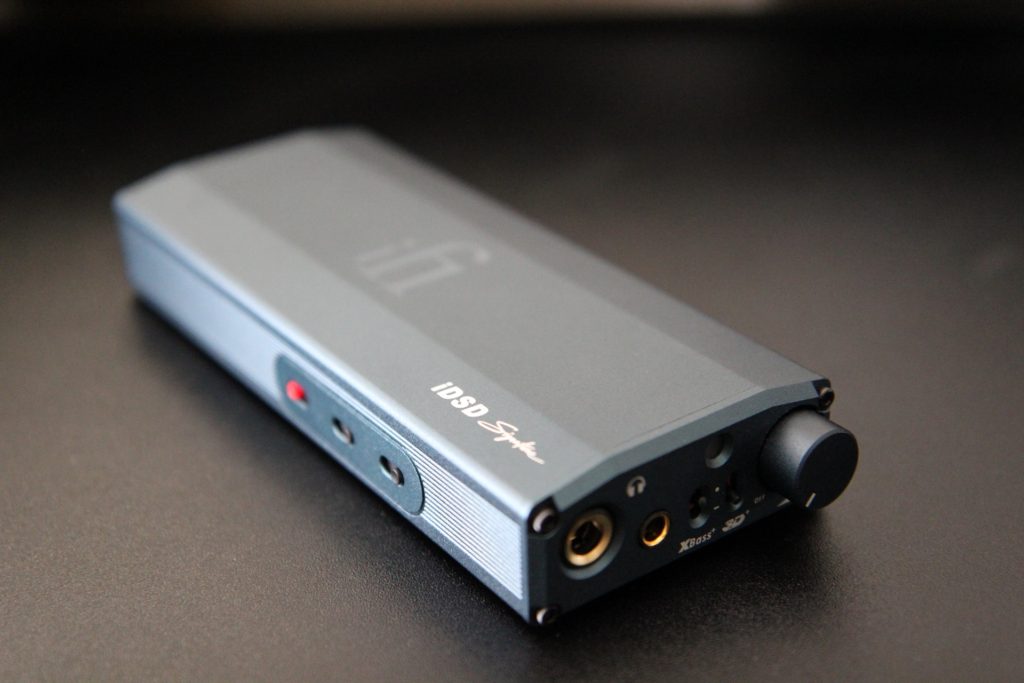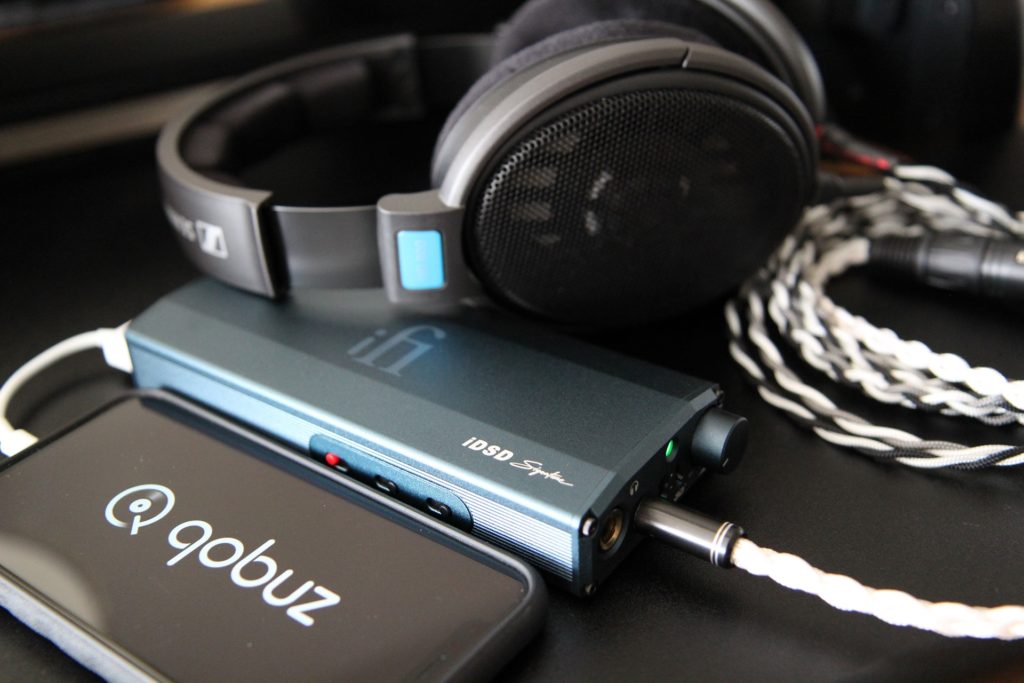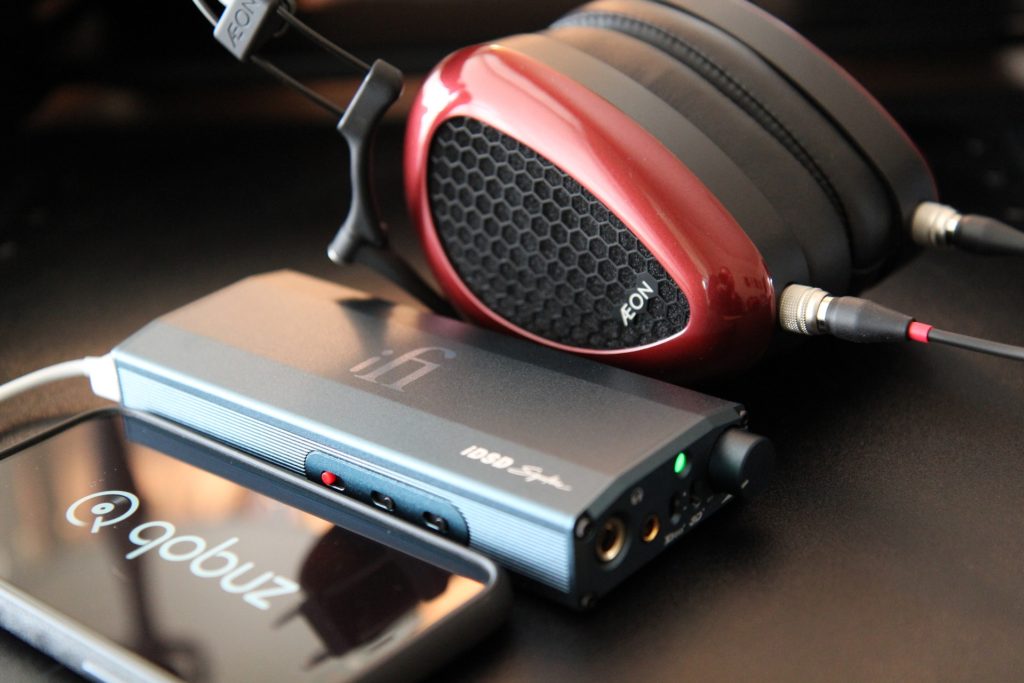The iFi Audio micro iDSD Signature ($649) is a compact battery-powered DAC and headphone amplifier. The design uses technology from the iCAN, iFi’s flagship headphone amplifier. I reviewed the $1,799 iCAN last October, and I wanted to see how close the iDSD Signature came to its high level of performance – at less than half the price.
It was exciting to review iFi’s flagship headphone amplifier. It was even more interesting to see which of the iCAN’s high-end features and technology show up in iFi’s more-affordable headphone products. The micro iDSD Signature is the new version of the company’s previous portable DAC and headphone amp, the micro iDSD Black Label. “Signature” edition implies polish and fine-tuning – the best version to date.
I took a close look at the iDSD Signature’s feature set and most importantly, its sound quality, to see how it stacked up against my reference SPL Phonitor X headphone amplifier ($2,499) and Marantz SA8004 DAC ($999). Keep reading to see if the $649 micro iDSD Signature matches the performance a full-sized desktop setup costing over 5 times as much.
Description and Features
The company markets the micro iDSD Signature toward music lovers who primarily use a mobile phone or tablet as their source. However, it also features fixed-volume RCA outputs which means that you can use it as a traditional USB DAC with any preamp. It’s also aimed at those who are new to the world of audiophile headphone listening and want a complete setup that uses the least amount of room.
Weighing in at just over a half-pound, the compact chassis exhibited almost no discernable heat output while in use. The metal enclosure, finished in a slightly textured space-blue finish, felt solid in my hands. All it took was few moments of holding it to validate its robust build quality. There was no chassis flex or other failure-prone weak points that I could see.
iFi’s ubiquitous XBass and 3D+ features are accessible via on/off toggle switches directly to the left of the main volume knob. This is a more simplistic and straightforward implementation of these two features versus the flagship iCAN’s ability to engage and fine-tune them. The XBass setting remains an essential feature, perfectly bolstering the low-end frequency response of your headphones. The XBass setting is indispensable; it’s one of my favorite features on iFi’s headphone amplifiers.
Also present from the iCAN are three selectable power output settings, as well as the IEMatch feature to fine-tune your listening experience. I found the latter to be well-implemented on the iDSD Signature, with no perceptible loss of fidelity or tonal changes when engaged.
Sound Quality and Versatility
To understand the DAC’s performance before trying the headphone amplifier, I unplugged the USB cable from my Marantz SA8004 DAC and connected it to the iDSD Signature. The sound quality easily matched, and in some areas exceeded, that of the SA8004. I heard a distinct three-dimensional quality to the midrange, with discernable layering and textures. Treble clarity and presence were spot-on, and never sounded harsh or shrill even with the volume cranked up. Bass energy was less boisterous than the SA8004’s presentation but exhibited admirable agility and speed.
I began evaluating the headphone amplifier’s performance with my entry-level $100 Koss Pro4S headphones. They sounded better than ever! I don’t use these headphones often because their sound quality is nothing special, but the iDSD Signature elevated their performance to new heights. I knew I would be in for a treat when I connected my higher-end headphones.
Power levels were effectively limitless, even on the lowest “Eco” setting, which I imagine will be more than enough for most listeners. If you need additional power, it’s available with a flick of the switch to “Normal” or “Turbo” levels. I tested the real-world battery life on the Eco setting with my Dan Clark Audio AEON 2 headphones. I was able to play high-energy electronic music at a satisfying volume for 12 hours before the red battery light started flashing, indicating less than 10% battery life remaining.
The performance was excellent from both the standard ¼” jack and the 4.4mm balanced jack. Don’t feel like you must exclusively use the balanced 4.4mm output option unless you already have balanced aftermarket cables.
Hi-Res with the iDSD Signature
Since it’s called the iDSD, I felt obligated to try Direct Stream Digital files. How close could well-recorded DSD files get me to the live performance? To experience true DSD from start to finish, I selected a release from NativeDSD.com which was natively recorded in the DSD 64 format.
Joe Beck & Ali Ryerson: “Django” is a duet of alto flute and alto guitar. When I closed my eyes and listened to “O Barquinho”, the symbiotic performance of these two unique instruments painted a vivid and enveloping sonic picture for my senses. I fully absorbed the tonal colors and nuance of the performance, and the reverb of the recording space brought me closer to the musicians than I’m accustomed to with standard 16bit/44.1kHz PCM recordings. The iFi DAC scaled up its performance accordingly and provided a clear example of the audible benefits of DSD.
Admittedly, just because a recording is in the DSD format doesn’t guarantee excellent sonics. Nonetheless, my experience with Django has encouraged me to seek out other well-recorded native DSD performances to enjoy with the iDSD Signature.
Headphone and Music Pairings
Sennheiser HD 600 – The iDSD Signature provided limitless power and headroom for me to dig deep into the volume knob. I cranked up my favorite part of “Juno Reactor – 10,000 Miles”, letting the driving rhythms of this psychedelic goa-trance classic take over and envelop me, without any distortion or harshness.
Audeze LCD-3 – Nasty Habits: “Deep Beats” – The remastered version of this song transported me back in time to the sound of drum ‘n’ bass music two decades ago. The LCD-3 and iDSD pairing excelled at conveying the tangible width of the soundstage. It transformed a simplistic song into something that captivated and demanded my attention from start to finish. The unmistakable sense of motion and movement of the lush analog synthesizers as they expanded outward horizontally created an exciting musical experience.
Dan Clark Audio AEON 2 – Duran Duran: “Out of My Mind” – The countless layers of complex sounds in this song make it a challenging test. The iDSD Signature handled it admirably, specifically in the way it presented the nuance of Simon Le Bon’s vocals. It was a perfect rendition that succeeded at coherently communicating all the emotions contained within the recording.
Caveats
When turning the unit on and off via the power switch built into the volume knob, I heard a transient pop noise through the connected headphones. Similarly, when it has been idle and then receives a signal, that pop noise returns when it comes out of its sleep mode, even if the volume knob is turned all the way down. For a product that bears the “Signature” name, I expected the company to implement muting relays to prevent sending these noises to the connected headphones.
The battery life LED is located on the right side of the enclosure by the USB-C charging port. It’s slightly recessed, so you must pick up the unit and physically rotate it to see the status of the battery life remaining. It would have been much more intuitive to have a second LED for the battery next to the power/status LED. This way, I could easily see both from the front of the unit.
I have concerns about long-term battery life. How many times can you charge the unit before there’s a noticeable degradation in capacity and discharge time? Is the battery subject to parasitic drain when sitting idle for a long time? These longevity concerns always come to my mind with any product that contains a captive non-user serviceable battery. Customers in the US can have the battery replaced by iFi after the 1-year warranty period. At the time of publishing the price for this service is $89.
Final Thoughts
The iFi micro iDSD Signature is an inexpensive way to jump into headphone listening. Its performance comes remarkably close to full-sized DACs and HP amps.
This represents an astounding value since it can functionally replace my desktop $2,500 HP amp and $1,000 DAC and not leave me wanting. The fact that it’s portable also adds to its flexibility and value. You get the best of both a desktop and mobile setup in one device, without sacrificing any features or sound quality.
It performs well above its $649 price and gave me close to the same listening experience with my Audeze LCD-3 headphones that my full-sized desktop setup does. It packs a remarkable amount of performance into such a small enclosure. Enthusiastically recommended for both newcomers to the hobby and seasoned audiophiles.




